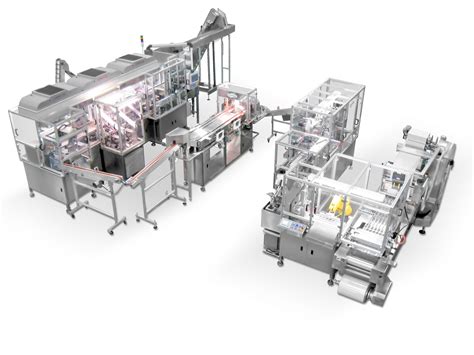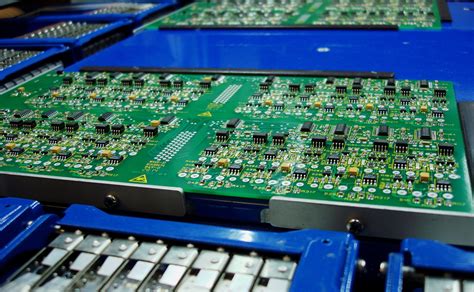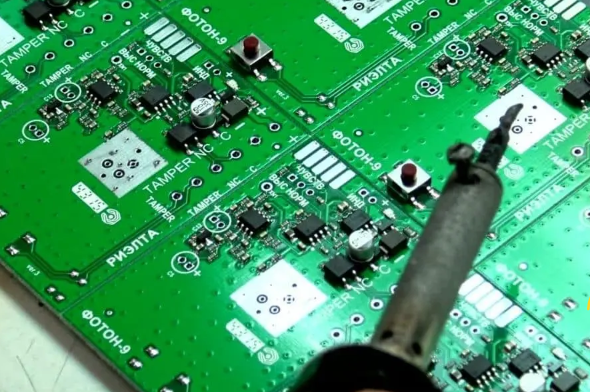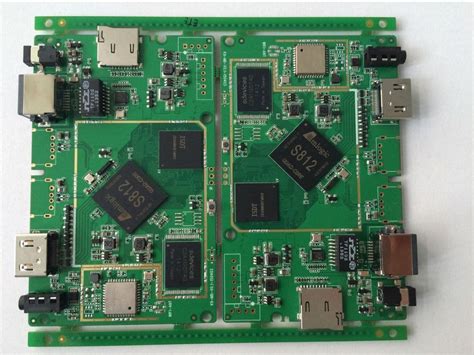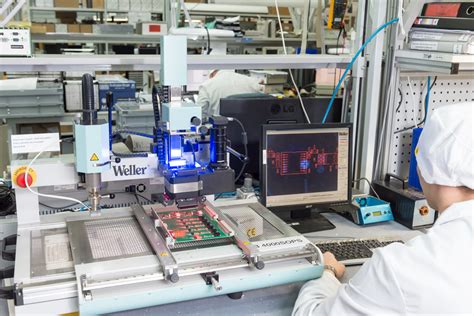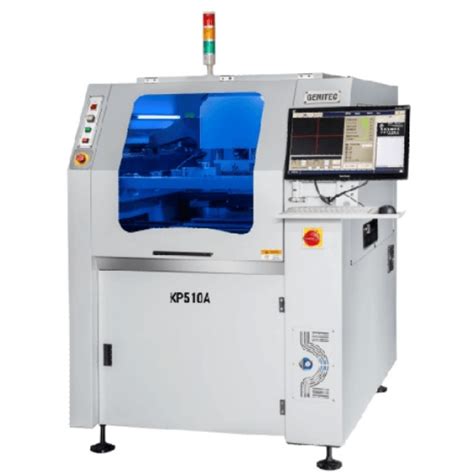Mastering the 6-Layer PCB Prototype for High-Performance Designs
Key Takeaways
When diving into 6-layer PCB prototypes, it’s essential to grasp the fundamental concepts that set them apart in PCB manufacturing. A significant advantage lies in the increased design flexibility, which allows you to incorporate complex routing and support for higher density components without compromising functionality. You should also be aware that choosing the right PCB manufacturing companies can significantly impact your design’s performance and cost-efficiency. Understanding the PCB manufacturing cost can help in budget management, ensuring that you balance quality and affordability effectively. Engaging with a reputable PCB manufacturing business is crucial for accessing advanced technologies and materials that enhance your prototype’s reliability. As you master these components, your ability to innovate within the realm of high-performance designs will be greatly enhanced, paving the way for creating efficient and robust electronic solutions tailored to meet contemporary market demands.
Mastering 6-Layer PCB Basics
Creating a 6-layer PCB prototype is an essential step for engineers looking to elevate their designs to accommodate complex electronic applications. Understanding the nuances of pcb manufacturing is crucial, as it directly influences both performance and reliability. A well-structured 6-layer PCB allows for advanced routing, better signal integrity, and effective thermal management.
When you choose to work with reputable pcb manufacturing companies, consider their experience with multilayer boards. This can significantly affect your pcb manufacturing cost and ultimately the success of your project. Selecting appropriate materials plays a pivotal role in determining the durability and functionality of your prototype; thus, adhere closely to best practices for material selection.
Here’s a quick look at some common factors in pcb manufacturing business:
| Factor | Description |
|---|---|
| Layer Count | More layers allow for denser circuits |
| Material | Choice affects performance – FR-4, Rogers, etc. |
| Copper Thickness | Impacts current handling and thermal performance |
| Surface Finish | Affects solderability and long-term reliability |
“A solid foundation in design principles is crucial when venturing into the world of 6-layer PCBs.”
By leveraging effective design techniques alongside these insights about pcb manufacturing, you can optimize your layout for high performance and maintain the integrity required in advanced applications.
Advantages of Using 6-Layer PCBs
Utilizing 6-layer PCBs in your designs offers multiple benefits that can significantly enhance the performance and reliability of your electronic applications. One of the primary advantages is the ability to accommodate complex circuit connections without the need for additional layers, which can complicate pcb manufacturing. With more layers available, you can achieve better signal integrity and reduced electromagnetic interference—key factors in high-frequency designs.
Moreover, employing 6-layer PCBs allows for more efficient use of space. This is particularly advantageous when working with compact devices that require numerous components. By consolidating your components within fewer layers, you can minimize the pcb manufacturing cost while still maintaining a high level of functionality. This approach tends to yield a cleaner layout, easing the challenges faced during the assembly process.
Additionally, many pcb manufacturing companies offer specialized services tailored for 6-layer prototypes, broadening your options for quality materials and innovative design techniques. As you venture into this realm, consider how these factors contribute to a successful pcb manufacturing business, where efficiency and customization are paramount. By harnessing these advantages, you position your designs to meet the demands of increasingly sophisticated electronic applications while ensuring reliability throughout their lifecycle.
Key Design Techniques for 6-Layer Prototypes
When working on a 6-layer PCB prototype, understanding key design techniques can significantly enhance the performance and reliability of your final product. First, proper layer stacking is crucial; you should aim to strategically arrange your layers to reduce electromagnetic interference and ensure smooth signal integrity. By placing power and ground layers adjacent to each other, you can minimize the loop area and maintain stable power distribution. Additionally, it’s essential to use via placements effectively. Proper placement can aid in thermal management while ensuring electrical connectivity across layers. You may also want to consider the implications of your design on pcb manufacturing costs. Opt for pcb manufacturing companies that specialize in 6-layer boards, as they might offer insights into material selection that can lower costs without compromising quality. In this arena, understanding the competitive landscape of the pcb manufacturing business allows you to choose a partner that aligns with your performance goals while keeping budgeting firmly in mind. Overall, optimizing these design techniques will not only boost functionality but also streamline the entire *pcb manufacturing process from conception through production.
Optimizing PCB Layout for High Performance
When you’re venturing into 6-layer PCB design, the layout is crucial for ensuring optimal performance, especially in complex electronic applications. One of the first steps in optimizing your layout is to utilize a strategic approach to layer assignment. By placing sensitive signal traces on inner layers and power distribution on outer layers, you can significantly reduce noise interference. Additionally, pay attention to your ground plane placement; a solid ground connection is vital for maintaining signal integrity and reducing electromagnetic interference (EMI). When working with PCB manufacturing companies, you should also consider the impact of via placement and trace width on the PCB manufacturing cost. Implementing proper trace routing techniques can help minimize these costs while enhancing performance. Remember that every layer contributes to the overall functionality—it’s essential to think about how each layer interacts with others in your design. This holistic view not only streamlines production but also enhances reliability, making your prototype an exemplar in a competitive PCB manufacturing business landscape. In essence, the balance between layout precision and design demands will ultimately determine the success of your high-performance PCB prototype.
Common Challenges in 6-Layer PCB Design
Designing a 6-layer PCB prototype can be rewarding, but it also presents various challenges that you should be prepared to navigate. One common issue is signal integrity, especially as you increase the number of layers. With more layers, maintaining proper ground planes and ensuring minimal interference becomes critical. You may encounter problems related to impedance mismatch, which could affect the performance and reliability of your electronics. Additionally, the pcb manufacturing cost can escalate with complexity, as you might need advanced materials and techniques that many pcb manufacturing companies offer.
Another challenge lies in optimizing your layout for both thermal management and component density. The more layers you have, the harder it becomes to dissipate heat effectively without compromising your design’s effectiveness. Furthermore, this complexity can result in longer pcb manufacturing business cycles. If proper attention isn’t paid during the design phase, it could lead to delays that affect overall production schedules.
Manufacturers also face difficulties in minimizing cross-talk between closely placed traces and ensuring that all connections are adequately addressed during production. Therefore, a careful balance must be struck between functionality and manufacturability as you develop your design strategy for a 6-layer PCB prototype. Recognizing these challenges early on will empower you to implement effective solutions tailored for high-performance designs while collaborating closely with your chosen supplier throughout the entire process.
Testing and Quality Assurance for Prototypes
When it comes to 6-layer PCB prototypes, rigorous testing and quality assurance are essential to ensure your designs function reliably in complex electronic applications. You must implement testing protocols that evaluate critical characteristics such as signal integrity, thermal performance, and mechanical stability. Utilizing advanced methods such as high-speed signal testing can help identify potential issues before mass production, making it crucial in the PCB manufacturing process. Many PCB manufacturing companies employ a variety of testing techniques, including Automated Optical Inspection (AOI) and X-ray inspection, to validate the integrity of the prototype. Additionally, understanding the pcb manufacturing cost is vital, as thorough testing can initially appear as an added expense but ultimately saves money by reducing failures and ensuring long-term reliability. Incorporating a solid quality assurance plan not only strengthens your design but can also enhance your pcb manufacturing business reputation by delivering products that meet or exceed industry standards. By focusing on these elements, you can significantly boost the overall quality and performance of your 6-layer PCB prototypes in competitive markets.
Best Practices for Material Selection
When embarking on the journey of 6-layer PCB prototyping, choosing the right materials is pivotal. The pcb manufacturing process can greatly impact the performance and reliability of your final product. To ensure optimal results, consider using high-quality substrates such as FR-4, which is known for its excellent electrical insulation properties. For high-frequency applications, you might prefer materials like PTFE or Rogers laminates that offer lower loss and higher thermal stability. Additionally, ensure that the copper thickness meets your circuit’s current requirements; thicker copper may enhance performance but will also influence the overall pcb manufacturing cost. It’s crucial to collaborate closely with reputable pcb manufacturing companies to source quality materials that align with your project specifications. Remember, the right material selection not only enhances functionality but also plays a significant role in minimizing delays and mitigating potential issues during the pcb manufacturing business lifecycle. By thoughtfully selecting materials, you pave the way for a robust design that meets high-performance standards while remaining cost-effective.
Future Trends in 6-Layer PCB Technology
As your designs demand more intricate features and enhanced performance, 6-layer PCBs are becoming increasingly critical in the landscape of electronics. The growing complexity of devices requires you to stay ahead of pcb manufacturing advancements. One of the most significant trends is the integration of flexible and rigid-flex technology, enabling a blend of adaptability and durability. This shift allows you to create boards that not only meet but exceed functionality expectations without compromising space. In addition, advancements in materials science are yielding high-frequency substrates that help reduce signal loss, optimizing your layout further for critical applications.
Moreover, sustainability is taking center stage, with an increased focus on eco-friendly materials and processes among leading pcb manufacturing companies. They are now prioritizing reducing the overall pcb manufacturing cost through innovative recycling processes and minimizing waste during production—a practice you should consider when selecting your suppliers. You may also notice an uptick in automation within the pcb manufacturing business, streamlining production processes, enhancing precision, and ultimately allowing for quicker turnaround times. As these trends unfold, keeping a pulse on emerging technologies and practices will ensure your 6-layer PCB prototypes remain at the forefront of performance and reliability in a competitive market.
Conclusion
In summary, mastering the intricacies of a 6-layer PCB prototype is vital for achieving high-performance designs in modern electronic applications. As you delve into pcb manufacturing, you’ll quickly realize that pcb manufacturing companies provide invaluable support in producing prototypes that meet demanding specifications. Understanding the pcb manufacturing cost is essential, as it influences your project’s overall budget and feasibility. Moreover, cultivating a strong relationship with your chosen pcb manufacturing business ensures that they grasp the unique requirements of your designs, thus enhancing collaboration and ultimately leading to higher-quality final products. By applying best practices and staying informed about advancements in technology, you can navigate the complexities of 6-layer PCBs and contribute meaningfully to innovative electronic solutions.
FAQs
What is a 6-layer PCB prototype?
A 6-layer PCB prototype is a printed circuit board that consists of six layers of conductive material, insulation, and copper traces. These multiple layers allow for more complex circuit designs and functionalities.
Why choose a 6-layer PCB over simpler designs?
Using a 6-layer PCB can significantly enhance signal integrity, reduce electromagnetic interference, and optimize space within your electronic devices. This makes it an excellent choice for high-performance designs.
What should I consider when looking at pcb manufacturing companies?
When evaluating pcb manufacturing companies, consider their experience, production capabilities, lead times, and quality assurance processes. It’s crucial to assess their ability to handle complex designs inherent in 6-layer PCBs.
How does pcb manufacturing cost impact my project?
The pcb manufacturing cost can vary based on the complexity of the design, materials used, and production volume. Always account for the potential need for specialized components when budgeting for your project.
What challenges might I face with 6-layer PCB design?
Common challenges in 6-layer PCB design include layer stack-up configurations, ensuring proper thermal management, and meeting the electrical requirements of your project. Addressing these challenges early can save time in the long run.


